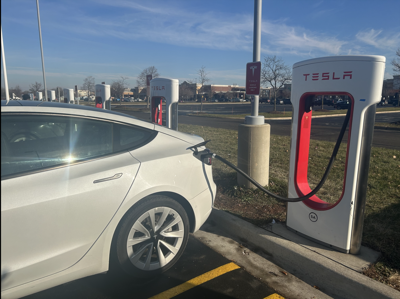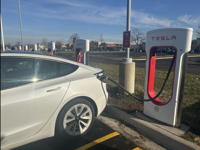(The Center Square) - The Washington Electric Vehicle Coordinating Council approved its first transportation electrification strategy intended to guide the state’s transportation sector away from fossil fuels and toward clean energy, primarily EVs.
Although the vote approved the TES executive summary and the council’s annual report to the Legislature, the actual TES has yet to be finalized. That work is to be completed by the Rocky Mountain Institute, a nonprofit organization, and submitted to the Legislature by the end of January.
However, the draft TES as of Nov. 29 contains many of the recommendations contained in previous versions, including:
A $5,000 incentive for alternative fuel vehicles, to be administered by the state Department of Commerce
Incentives for residential and commercial installation of electric vehicle charging stations
Allow automakers to sell EVs directly to consumers
The TES also notes the many challenges the state faces in an effort to achieve a goal, which includes a state ban on new gas-powered vehicle sales by 2035. For EVs to be practical, they require a network of charging stations that match the mileage range of their batteries. The EV Council has estimated the state will need three million by 2035, whereas there are only 4,600 public charging ports of all kinds currently available.
“Current charging infrastructure is generally decentralized, can be unreliable, lacks interoperability, and due to slow speeds can result in queues for open chargers,” the draft TES states. “Trip range can be limited by negative weather impacts on battery capacity and can be worsened by lack of EVSE infrastructure. Specific vehicle types such as e-buses, fleet vehicles, and used cars are likely to face higher barriers.”
To reach the goal of three million charging ports by 2035, the state would need to build 250,000 ever year, including this year. However, the draft TES notes that “there are not sufficient technicians to service EVs, and a lack of engineers, electricians, and technicians to install and maintain EVSE and related grid infrastructure. Additionally, increasing this limited workforce needs to be balanced with job security for the existing workforce.”
The draft TES argues that to overcome these challenges, the state will need to “enact a collection of supplemental policies” in several categories that include:
Consumer education and capacity building
Charging and utility infrastructure
Light-duty passenger, medium-duty, and heavy-duty vehicles
Electrified micromobility
Workforce
Representing the state Office of Financial Management on the council, Erik Hansen told colleagues at their Nov. 20 meeting that “our first time through, it's not going to be exact, but we're going to continue to work this issue and make sure that it benefits the citizens.”
The draft TES also concludes that the state Legislature’s 2030 EV target regarding carbon reduction goals is “an aspirational stretch goal, but likely infeasible,” due to the enormous costs involved.
The EV Council estimates that to achieve the 2030 goal, the following would need to occur:
Rebates amounting to $9,000 per sedan and $11,000 per light truck or SUV in 2030.
Approximately 185,000 additional charging ports by 2030
Voluntary discontinuation of non-electric light-duty vehicle production and sales by all automakers and dealers.
During the council’s Nov. 30 meeting, Co-chair Deborah Reynolds said that “the next biggest part (of future TES work) is our inclusion of a serious discussion of equity.”









